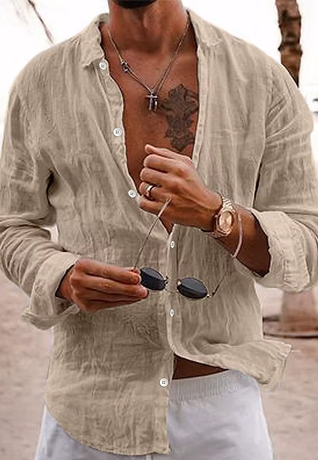What is Fashionization? There is no doubt that we all live in consumer society. The heterogeneous debate about the consumption regime and its effect on our everyday life has been going on for centuries both in political and management circle.
There is evidence that the phenomenon of consumer society has been part of continuous development which has spanned over the ages of human existence and accelerated during sixteenth century in Europe and onward during nineteenth century in USA and other part of the world (Desmond, J. 2003)[1]. However more recently after the fall of Berlin wall, the collapse of Soviet Union and the monopolization of the world politic as Dewey[2] believed the capitalists have even sought monopoly power over art markets, as a result the illusion that capitalist development delivers freedom, because freedom is delivered through choice and choice involves the creation of markets, consumers and consumption (Dholakia and Dholakia, 1985)[3], has been more wide spread and dominated the management studies. Galbraith[4] in 1958 and Schor[5] in 1999 and later on Shankar, Whittaker & Fitchett[6] in 2006 questioning the notion of consumers, consumption and its effect on our life, and the role of marketing in the contemporary world. Those authors provided examples of research that shown the increase of consumption has not improved the quality of human life and in many cases has even contributed to more stress and uncomforted feeling. They even criticized the misuse of marketing as in many cases marketers/media did not just try to satisfy consumers’ needs but also to create/invent needs by misrepresentation of reality and push the society toward materialist and over consumption.
The paradox here is that due to increase of competition in marketplace in one hand and the illusion that freedom is delivered through choice in the other hand, marketer has introduced more and more new products/services to consumers market, not purely base on consumers’ needs but more based on what marketers believe that the consumer may want/desire. In addition, as Schwartz[7] (2004) highlighted, the increase of choice not only cause paralyze but also increase the probability that consumer get bored or dissatisfied faster of any choice they make even if they chose the best possible option. What marketers have established here is the fashion aspect of industries whatever industry they are in. This is what we can call the Fashionization of industries, as many of those new products/services are driven by fashion not the needs of consumers (Gennaro, 2007).
The question is what should the marketer do? And what is the role they want to play to improve the human life quality? One option would be that marketer take more social responsibility and become good citizen and use their knowledge collectively to cool-off (demarketing) this trend of Fashionization and over consumption. However, this must be a collective action that all follow, otherwise those who take social responsibility will lose their market share to those opportunists who try to increase their market share. So, we all know, in reality this option will not happen without the interference of government and restricted legalization. But as experience shown the increase of government control has been more harmful to society’s well-being even though it may be able to stabilize consumption.
Other option would perhaps be as Seth Godin[8] the marketing guru suggested in 2003, marketers in order to maximize their benefit and be successful in the market there the consumers have many choices they should emphasize to make their products/services unique and remarkable from other alternative. In addition, companies should even restructure their promotional and communication strategy that suit the fashion marketing. As I said whatever we do, we are all in fashion industry now; the difference is that the people in fashion industry they know that they are in fashion but for the rest of us, we must adjust ourselves to Fashionization. Godin (2003) suggest that marketers should avoid the TV-industrial Complex and probably ignore the early and the late majority consumers in their promotion activity as they are good to ignore commercial, when there are too many choice and limited times, instead the marketer should focus on innovators and early adopters in the market as they are most often very good listener and more likely to spread the idea. However even this option has its own limitation as a long-term strategy in the market with ever-escalating consumers expectation. As to be innovative and differentiate yourself from the others, marketers may have to introduce new products/services on regular bases which will even escalate the paradox of choice further.
It appears it would almost, be impossible to solve the dilemma without a shift in the marketers and the society’s perception of reality and the meaning of human life. Certainly, it is needed to introduce something more than rational scientific tools into the management and sociological studies, as its dose appear that we try to interpret the irrational world with the rational tools of science. Perhaps Cassirer (1946)[9] was right by saying mythical thinking helps understand our environment when rational understanding of it (logos) is exhausted, when logical arguments do not give a satisfying understanding. Here one clear option would be, to welcome the aesthetic thinking into the management and sociological studies as a new source of knowledge creation and understanding of the phenomenon. Perhaps it is needless to say that I am not proposing the aesthetics thinking as ultimate solution to this dilemma but more as a aid on the way… as Ross[10] (2007) said only art has a power comparable to that of politics, namely reframing and expanding what can be perceived and reconfiguring what is thinkable. It’s worth to highlight that with aesthetics I do not refer to theory of taste nor solely to art theories but more as Rancière[11] (2004) pointed out, as the distribution of the sensible that enables modes of articulation, which means ways of perceiving, thinking, and saying. In the other words the sensory knowledge and felt meaning of objects and experiences (Hansen, Ropo & Sauer 2007)[12] and the sensory assessments of how we feel about anything. However maybe it needs more clarification that, how could marketers and management benefit of aesthetic judgment in their everyday work. Referring to Pierre Guillet de Monthovx aesthetics begin with subject rather than the object and not taking the subject for granted neither but converts him or her into a question to be examined from a dynamic and genealogical perspective (Mandoki, 2007)[13]. For example, marketers and managers should also consider the emotion and the feeling of their stakeholders about the company and its products as an alternative to the regular 4Ps and transactional marketing. With an aesthetic perspective marketers and managers would be able to address questions and issues that are fundamentally different from instrumental or ethical concerns (Dean et al 1997)[14].
As research suggest marketing involved not just managing exchanges between stakeholders, but much more complex human interactions. Complexity can be both beautiful and sublime, it does not have to be dangerous and scary. People get nervous about complexity, when actually they could appreciate it, see the potential in it, like they do when they go to a good art show (Guillet de Monthovx, 2008).[15] Managers and marketers could learn from art and artists that how to deal with this complex situation. You do not have to love the physical artwork of every artist, but they have a way of approaching problems and engaging in process that can be extremely helpful says Michelangelo Pistoletto.[16]
Ref:
Schwartz, B. (2004) “The Paradox of Choice.” New York, Ecco https://amzn.to/32JrjGl
Desmond J., (2003) “Consuming behaviours” Palgrave Macmillan, pp 2-24 https://amzn.to/3c9bJHi
Guillet de Monthovx, P. (2004) “The Art Firm” Aesthetic Management and Metaphysical Marketing, Stanford University Press, PP 56 https://amzn.to/2RD7CcS
[1] Desmond J., (2003) “Consuming behaviours” Palgrave Macmillan, pp 2-24
[2] Guillet de Monthovx, P. (2004) “The Art Firm” Aesthetic Management and Metaphysical Marketing, Stanford University Press, PP 56
[3] Dholakia, N. and Dholakia, R.R. (1985) ‘Choice and Choicelessness in the Paradigm of Marketing’, in N. Dholakia and J. Arndt (eds) Changing the Course of Marketing: An Alternative Paradigm for Widening Marketing Theory, pp. 173–85. Greenwich, CT: JAI Press.
[4] Galbraith J. K. (1958) “The Dependence Effect” The New Press, New York
[5] Schor, J. B.(1999), “Towards a New Politics of Consumption” The New Press, New York
[6] Shankar, A., Whittaker, J., & Fitchett J.A., (2006) “Heaven knows I’m miserable now”, Marketing Theory, vol. 6, no. 4, pp. 485-505, Published by SAGE
[7] Schwartz, B. (2004) “The Paradox of Choice.” New York, Ecco
[8] 13 November 2008
[9] Lindqvist, K. The myth of management as art and the management of art as myth
[10] Ross, K “Introduction: Regime Change. Jacques Ranciere and Contemporary Art”, Artforum (March 2007): 254-255
[11] Rancière, J. (2004) The Politics of Aesthetics, continuum, London and New York: Continuum
[12] Hansen, H., Ropo, A., Sauer, E., (2007) “Aesthetic leadership” College of Business Administration, Texas Tech University
[13] Mandoki, K (2007) “Everyday Aesthetics” Prosaics, the play of culture and Social Identities, Universidad Autonoma Metropolitana, Mexico PP 57-60
[14] Dean Jr., J. W., Ottensmeyer E., Ramirez R., (1997) “An aesthetic perspective on organizations” In Cooper C., Jackson, S., “Creating tomorrow’s organizations” A handbook for future research in organizational behaviour, Wiley, Chichester
[15] Guillet de Monthovx, P. & Statler M., “Aesthetic play as an organizing principle” In: New and Emerging Approaches to Management & Organization. Eds. Barry, D. & Hansen, H., Sege Press (2008)
[16] Ibid







